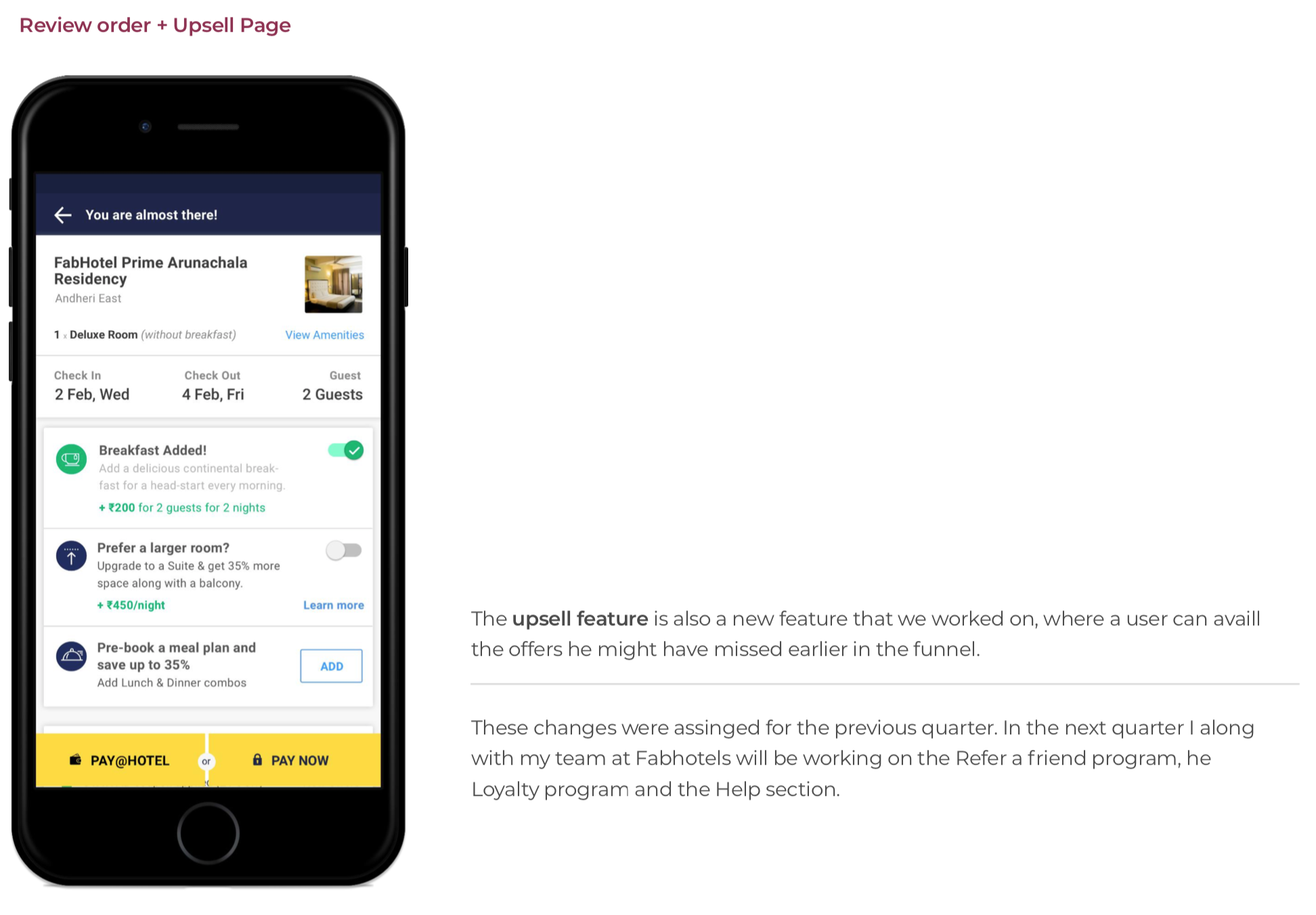Fabhotels
FabHotels is a network of 3 star budget hotels in India. It currently operates in more than 60+ cities of India with 800+ Hotels, including major cities like Mumbai, New Delhi, Bangalore, Hyderabad, Indore, and Coimbatore. Their aim is to provide standardized hospitality services at economical budgets.

My Role
I was a UX designer working with Fabhotels. My role was to lay out the groundwork for user-centric design process by doing regular user interviews, analytics, creating personas, leading up to task models and customer journey. I was also responsible for creating wireframes, prototypes and the final user interface.
A glimpse of the designs and flows







User Research
During our user research and usability testing sessions, our user pool went up to 150+ interviews. Our final aim was to test our current design in real world and validate our quantitative data received from analytics. As an accessible deliverable to share with everyone involved, we chose to map our customer journey through this data. We got this analysis by three sources:
Competitive Analysis
We wanted to dig deeper and enhance the new features that came along the way and compare it with whats already out there. This helped us compare our product on industry level.
Task Model
Current Customer Journey and Pain Points
We started with documenting all the current problems into a product roadmap. However, before we could get to that we needed to understand the industry standards beyond just one competitor. More importantly, no qualitative or quantitative methods of research were being used for customer facing products which translated into vague design tasks with no impact on larger picture.
To understand what the customers are concerned about the most, we raided the call centre which employs about 100 people. We started interviewing them with fixed questionnaires, focussing on the nature and volume of queries. After interviewing about 40 people from the staff the answers started repeating themselves. After that, we stopped and moved on to usability testing with the customers.




We used Guerrilla usability testing on our mobile website to quickly validate the above data. We gathered subjects, gave them a scenario and multiple tasks to complete, recorded their activities and also noted down their concerns/pain points/delight points. Additionally, we arranged stakeholder interviews with the CEO to CMO and other key people in the organisation to understand what market segment is the organisation trying to target. After understanding this we started interviewing that market segment in form of user interviews.
While most of the problems/missing features we discovered
were known to some people, they weren’t documented.
Hence, they were never discussed on the ground level and remained unsolved.
New Customer Journey
One of the points that we were certain about while starting to create this journey was that we didn’t want it to stop at “Booking done”. Our research findings were holistic to craft the entire experience. Right from the need of staying at the hotel to the checking out. We used Miro as our digital tool because we wanted real time updating across all stakeholders and designers. Here is a glimpse of the journey. Our intent was to design not on the basis of user flow because our mental model does not follow the typical system journey we design. We wanted to start with the 'needs' and 'pain points', and take customer through an experience; something that didn't just stop at using the mobile app.




Proposed Solutions
The proposed solutions were given keeping in mind the budget and feasibility of the product. We worked around our backlog to add these features in our product roadmap to meet the business objectives and user needs. The implementation of the entire system was slow so as not to rattle the existing users, ie: it was executed in phases and we used A/B Testing as a method to evaluate the performance of each design. -
To view the detailed customer journey map and suggested solutions click here










